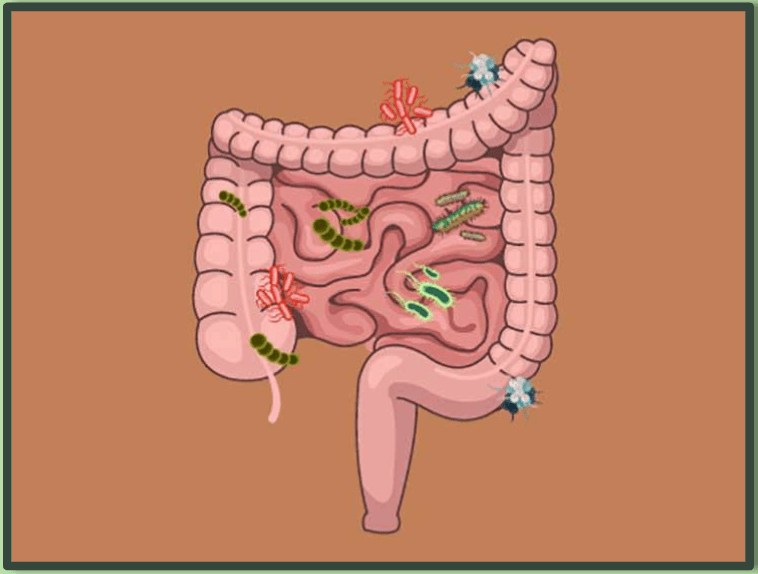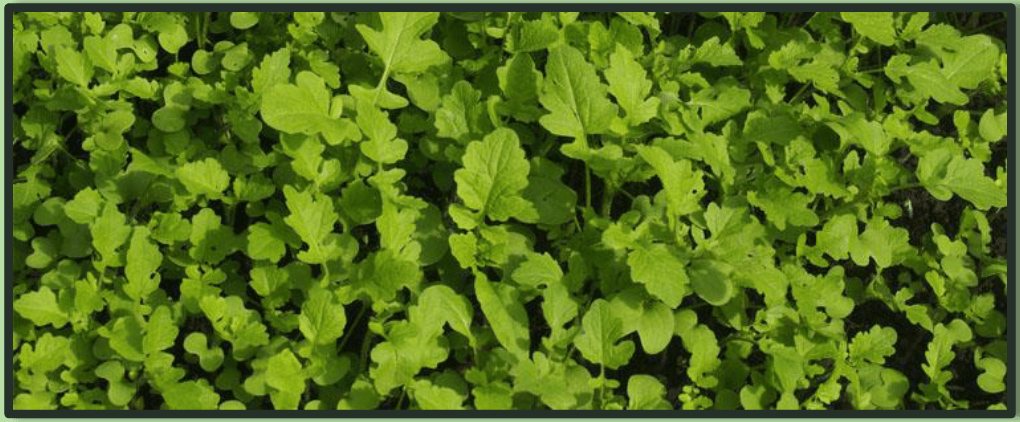By Larina Evstafyeva
Key words: soil microbiome, gut microbiome, microorganism diversity, soil health, gut health, soil management

A lot of the latest dietary advice is pointing to the importance of the human gut biome. People are now more interested in what foods they should eat to keep a healthy gut biome or what liquids help create the most optimal environment for digestion. The human gut biome consists of microorganisms that live inside the gut and help digest the food and nutrients we intake. Though to some it might sound appalling to hear that there are about 10 to 100 trillion microorganisms, most of them being bacteria, living inside our guts, these microorganisms are essential towards human health, affecting immune, metabolic, and neurobehavioral status. Most of these organisms are helping us to properly digest our food efficiently. Soil, just like the gut, is a biome that contains its own microorganisms that help make the soil rich and useful to produce vegetation. Thus, soil has its own microbiome, that which affects the vegetation that grows in it, vegetation that we ingest and feed to our livestock. Could the health of the soil microbiome be linked to the health of the human gut microbiome?
A recent study by Blum and colleagues (2019) investigated this question of whether soil microbiome affects human gut microbiome, and if so to what degree? What they found was staggering, They suggest that ever since the industrial era, the human gut biome and the soil biome have gone through drastic changes and continue to change, not all for the best. Before the advent of agriculture, humans had a lot more contact with dirt and in general had worse hygiene, all of which aided in creating a very diverse microbiome in the gut. Today, most people around the world are much more hygienic, have less contact with dirt, have access to antibiotics, and have diets that consist of high-processed foods and low fiber intake. Because of the industrial revolution and rise in innovation of technology, the urban human population has less contact with dirt. These changes have lessened the diversity of microorganisms in the human gut biome; however, they are not the only factors.

Figure 1: the cycles above show not only how soil biome and gut biome in humans are related but also how much the relationship has changed and affected each other ever since the industrial revolution (Blum,2019).
The soil microbiome has also drastically changed due to the increased use of fertilizers, control of plant diversity, over-cropping, and in general, to the extreme measures that are taken to regulate soil for mass production of vegetation. In other words, the soil that is used for plant production has a lesser and much different diversity of microorganisms than the untouched “wild soil”, or soil that was there before the industrial revolution. The lessened biodiversity of the soil microbiome in turn affects the quality and health of plants which are grown as food for humans and livestock.
The relationship between the human gut microbiome and the soil microbiome is best represented in Figure 1 which also shows the increase of complexification of the relationship that occurred ever since the industrial era.
But why is the diversity of microorganisms so important?
Diversity of microorganisms helps with nutrient production and cycling. Lower microbial gut diversity has been linked to inflammatory bowel disease, diabetes, obesity, cardiovascular diseases, neurological diseases, and other gastrointestinal diseases. Each species breaks down certain substances via fermentation which in turn helps fuel other body processes. The substances that are broken down by the organisms cannot be digested by the body itself, but nonetheless, are needed to be degraded as they form products that are essential towards our nutrition such as simple sugars and fatty acids. This direct relationship between microorganisms and the human gut provides evidence for coevolution. The more diverse the gut microbiome is, the more resilient and capable the gut is (especially to fight of disease), as well as more efficient in breaking down essential substances. Since the human diet is very diverse, many substances need to be broken down and the more variety of microorganisms there are present, the higher the chances that each substance will be broken down.
In soil, microbial processes are linked to plant health and growth. The soil microorganisms in broad view serve the same goals as the gut microorganisms due: break down essential nutrients, aid in growth and nutrition, and aid in disease resistance. The soil has direct contact with plant roots which is one of the main ways how plants attain their nutrition and maintain their health. Soil microorganisms’ function in nitrogen fixation, phosphorus solubilizing, and suppression of pathogens and diseases that can come in contact with the plant roots. Microorganisms help feed the plant as well as protect the plants from stress from both biotic and abiotic factors (i.e., viruses and weather). Microorganisms also aid in the sprouting of seeds. The same concept goes for the diversity of microorganisms in the soil as is in the gut; the more variety, the higher the chances the plant will get proper nutrition and protection.
In general terms, the more variety of microorganisms, the better.

A healthy gut biome means having a diverse group of microorganisms that interact to break down foods and produce essential gasses and energy fuels. The microorganisms in the gut biome consist of two groups: autochthonous – coming from the gut/already present- and allochthonous- those that come from outside sources. On average, individuals are supposed to have very distinct and diverse microbiomes compared to other individuals, especially as they age and intake more things that help diversify their microbiomes. However, recent studies show that this is less and less the case. The contribution of this event is due to a diet of high-processed foods as well as intense control, filtration, and addition of agrochemicals to the soil used to grow food. In other words, soil and the human gut have a direct relationship, as soil microbiome diversity decreases so does the diversity in the human gut microbiome, and with it comes drastic events, such as depletion of sustainable production of food and rise of disease in humans. Diversifying the human gut biome includes ingesting foods that come from microorganism-rich and diverse soils as well as having direct contact with rich soil.
Interestingly, the human gut microbiome, being as diverse as it is, is only a 10th of a percentage as diverse as the soil microbiome. Furthermore, there are only a few species of microorganisms that are found in all soils while the more significantly rich and diverse soils have the rarer species. Those rich soils are necessary to produce high-quality vegetation.

The layer of soil that hosts all these microorganisms is the rhizosphere (topsoil). A healthy, rich rhizosphere depends on several factors: soil type, available moisture, mineral deposition, genotype of plant (plant diversification also helps diversify the soil), and more. Several of our current common cultivation techniques of plants are reducing and threatening the soil microbiome diversity and thus the health of soil. Such techniques include regular soil turnover for weeds and pests to prepare it for seeding (soil tillage) and hydroponic cultivation, which is where plants are grown in nutrient rich liquid solutions rather than soil. Together not only is the soil microbiome becoming less diverse but is also causing soil erosion. This is particularly concerning as only 5%-7% of all land on earth is topsoil. The loss of microorganisms and topsoil is an effect that cannot be reversed and will to further global issues such sustaining enough food to feed the population.
In summary, reduction in soil biodiversity has a direct linkage to the consumption of nutrient-deprived vegetation, which contributes to a less diverse human gut microbiome, as well as deprivation of soil ecosystem efficiency. If the health of the soil declines so does the ecosystem that thrives and relies on it. These losses in biodiversity
are contributed by direct courses such as human farming and agriculture and indirect causes such as global climate change.
So, what can we do about?
Certainly, going back to living a lifestyle before the industrial revolution or playing in dirt and feces cannot be the answer. As the soil microbiome and gut microbiome are becoming more increasingly explored, there have been some potential solutions to sustain soil microbiome health. These potential solutions include doing the opposite of what is causing the drop in micro-diversity. This includes organic farming with minimum management, minimum level of tillage, strategic crop rotation, diversifying plant growth, and others. The use of green manure has also been seen to be helpful, which is a fast-growing crop that covers the soil that prevents soil erosion and helps return valuable nutrients back into the soil.

Figure 2: an example of green manure also known as cover crops. These can be grown to help sustain the health of the soil as well as prevent the growth of weeds. These crops include ryegrasses, clovers, peas, winter wheats, and more (Holly, 2008).
Reducing this threat and enriching soils in their biodiversity can help with plant resistance, which means less yield loss of vegetation production, as well as promoting the quality of plants produced both for consumption of human and livestock as well as medicinal plants as well. The advantages of maintaining and promoting soil biodiversity can trickle down to many factors that affect the world around us, such as better yield of food production to aid in global food security, promoting gut health of individuals to reduce the risk of disease, amplifying quality plants that are resilient and nutrient abundant, and more.
This topic on soil microbiome and gut microbiome is relatively new in the scientific research community. Additional focus and research on how to sustain, maintain, and promote soil biodiversity can help in solving the issues associated and directly linked with soil biodiversity loss. Communicating such findings to farmers and agricultural managers is also essential to taking immediate action to refining agricultural techniques and preventing long term problems and, in turn, improving the health of the human population.
If interested to learn more about the soil and human microbiome relationship, please visit:
Blum, W. E. H., Zechmeister-Boltenstern, S., & Keiblinger, K. M. (2019, August 23). Does soil contribute to the human gut microbiome? MDPI. Retrieved from https://www.mdpi.com/2076-2607/7/9/287/htm
To learn more about the human gut microbiome and its functions, check out:
Valdes, A. M., Walter, J., Segal, E., & Spector, T. D. (2018, June 13). Role of the gut microbiota in nutrition and health. The BMJ. Retrieved from https://www.bmj.com/content/361/bmj.k2179#:~:text=What%20does%20the%20gut%20microbiota,acids%20(SCFAs)%20and%20gases.
To see what findings have been made to provide solutions to sustain soil health, check out:
Bertola, M., Ferrarini, A., & Visioli, G. (2021, June 28). Improvement of soil microbial diversity through sustainable agricultural practices and its evaluation by -OMICS APPROACHES: A perspective for the environment, Food Quality and human safety. Microorganisms. Retrieved from https://www.ncbi.nlm.nih.gov/pmc/articles/PMC8308033/
Image citations:
Robertson, R. (2017, June 27). Why the gut microbiome is crucial for your health. Healthline. Retrieved from https://www.healthline.com/nutrition/gut-microbiome-and-health
Owens, B. (2020, August 7). Microbes & bioavailability: Getting the most out of your garden. Medium. Retrieved from https://medium.com/my420cents/microbes-bioavailability-getting-the-most-out-of-your-garden-6690357dbce6
2008, 29 A., Ceth, Holly, “Holly, Dore, J., Samantha, “Samantha, Daibread, “Daibread, McDermott, A., “Adele, Wanda, “Wanda, Backley, J., “Yes, Deremott, A. M., Elspeth, “Elspeth, Pat, … Jasmin. (n.d.). Green manures – the good, the bad and the ugly. GrowVeg. Retrieved from https://www.growveg.com/guides/green-manures-the-good-the-bad-and-the-ugly/
